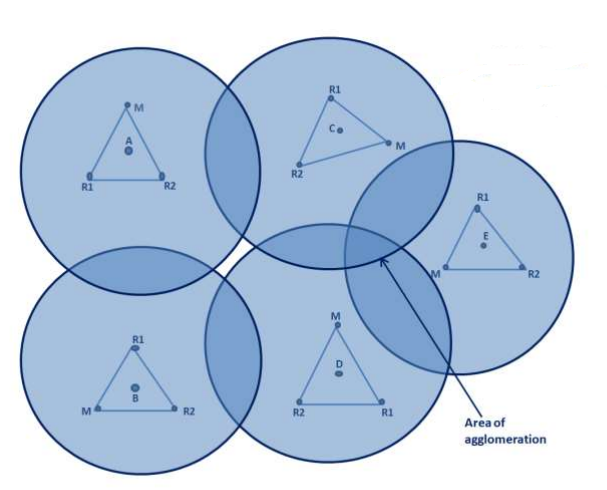The Weber Model of Industrial Location was proposed by Alfred Weber in 1909. According to Weber, industries will locate at the point where the total costs of production, including transportation, labor, and raw materials, are minimized.
Table of Contents
What was the aim of the theory?
The aim of the Weber Model of Industrial Location was to explain why industries are located where they are based on the minimization of production costs, particularly transportation, labor, and raw materials costs.
Weber Least Cost Theory Statement
Weber Least Cost Theory is the cornerstone of the Weber Theory of Industrial Location. It states that firms will locate where they can minimize their total costs of production. The theory is based on the assumption that firms have the freedom to choose their production site and can move to another location if it is more cost-effective.
"Weber Model of Industrial Location is also known as the Least Cost Theory"
Assumptions of Weber Model of Industrial Location
- The model assumes that there is uniform distribution of raw materials and labor in the region.
- It assumes that industries produce a single homogeneous product.
- The production process is assumed to be fixed over time, without any technological advancements.
- There is perfect competition in the market.
- Transportation costs are assumed to increase proportionally with distance.
- Workers cannot easily relocate to areas with better job opportunities.
- Industries are assumed to aim for profit maximization, aiming to minimize costs while maximizing output.
Factors Affecting Cost of Production
- Transportation Costs
- Labour Cost
Transportation Costs
Weber emphasized the importance of transportation costs in determining the location of industries. He argued that industries would seek to minimize transportation costs by locating closer to sources of raw materials and markets for finished products.
Labor Costs
Labor costs also play a significant role in the location of industries. Weber suggested that industries would locate where labor costs are minimized, like in areas with access to a skilled and affordable labor force.
Locational Triangle
Weber proposed a locational triangle to illustrate the trade-offs between transportation costs, labor costs, and agglomeration economies. Industries would seek to locate at the point within the triangle where these factors are optimized.
According to the Least Cost Theory, there are three main types of industries:
- Raw Material-Oriented Industries: These industries are located near the source of raw materials to reduce transportation costs. Examples include mining and agriculture.
- Market-Oriented Industries: These industries are located near the market to reduce transportation costs. Examples include retail and service industries.
- Labor-Oriented Industries: These industries are located near the labor market to reduce labor costs. Examples include textile and garment industries.

Agglomeration Economies
Weber recognized the concept of agglomeration economies, which refers to the cost savings and benefits that arise from clustering industries together in a particular location. These benefits are shared infrastructure, access to specialized labor and suppliers, and knowledge spillovers.

Site and Situation Factors
Weber distinguished between site factors, which refer to the physical characteristics of a location such as terrain and climate, and situation factors like proximity to markets and transportation networks.
Significance of Weber Model
Weber model has been influential in shaping thinking about industrial location and the factors that determine it. The model suggests that businesses choose locations that minimize their production costs and that transportation costs play a significant role in the decision-making process.
Criticism of Weber Model of Industrial Location
- The model oversimplifies complex industrial location decisions by focusing solely on transportation, labor, and raw material costs.
- It provides a static analysis of industrial location without considering dynamic factors such as technological advancements and changing consumer preferences.
- The model relies on unrealistic assumptions such as uniform input availability, fixed technology, and perfect competition.
- It ignores non-economic factors such as government policies, social factors, and cultural influences that also play a significant role in industrial location decisions.
- The model lacks flexibility as it does not account for variations in industry types, market structures, or regional characteristics.
- It may not be applicable to all industries or regions, as it focuses primarily on manufacturing industries and may not capture the complexities of service industries or non-urban areas.
Contemporary Relevance
Today, Weber’s model continues to be studied and debated as a framework for understanding industrial location. Some scholars argue that the model is outdated and does not reflect the complexities of the modern global economy, while others maintain that it is a useful tool for understanding the location decision in many industries.
Read: Geography